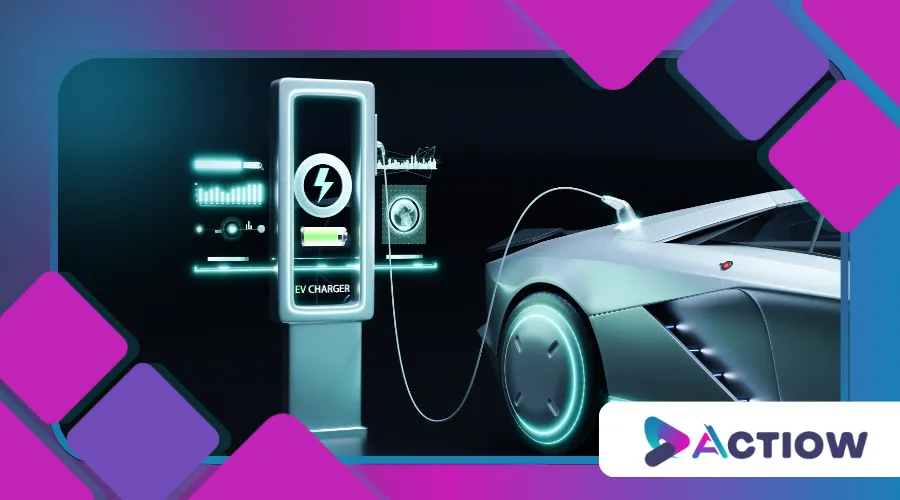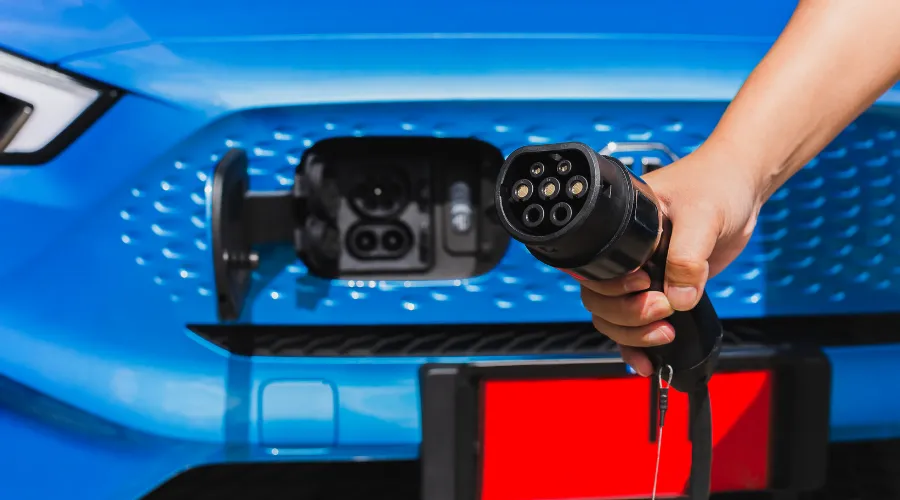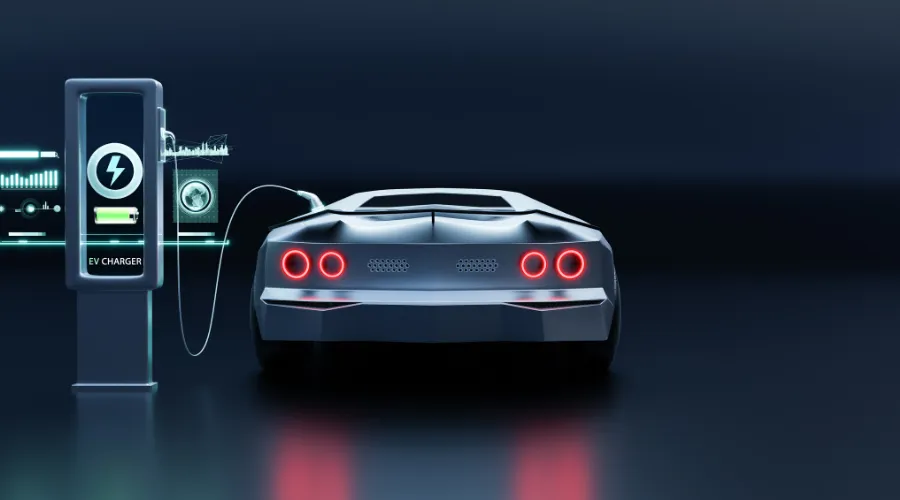The Truth About EV Battery Swapping: Is It Finally Viable?

Anúncios
EV battery swapping has lingered on the fringes of the electric vehicle revolution, promising a tantalizing solution to range anxiety and charging delays.
For years, the concept has been a futuristic footnote—intriguing but impractical, like a concept car that never hits the showroom.
Yet, as the global push for sustainable transportation accelerates, the question looms: is battery swapping finally ready to reshape the EV landscape?
Anúncios
This article dives deep into the realities, challenges, and breakthroughs of EV battery swapping, exploring whether it’s a game-changer or a persistent pipe dream.
Recent developments in battery technology and infrastructure improvements are making battery swapping a more feasible option than ever before.
As cities invest in EV infrastructure, the potential for battery swapping to alleviate urban congestion and enhance the EV ownership experience is becoming increasingly tangible.
The Allure of Instant Power
Imagine pulling into a station, swapping your depleted EV battery for a fully charged one, and driving off in under five minutes—faster than filling a gas tank.
This is the core promise of EV battery swapping: convenience that rivals the refueling experience of internal combustion engines.
Unlike traditional charging, which can take 20 minutes to hours depending on the charger and battery, swapping offers near-instant gratification.
It’s an elegant solution to the time crunch that frustrates EV drivers, particularly those without access to home chargers or on long road trips.
The appeal extends beyond speed.
Swapping could reduce upfront EV costs by separating battery ownership from the vehicle, allowing drivers to lease batteries and sidestep the hefty price tag of lithium-ion packs.
It’s like buying a smartphone without the battery included—you pay for the device and subscribe to the power.
This model could democratize EVs, making them more accessible to budget-conscious buyers.
But while the idea sparkles with potential, its real-world execution has hit plenty of roadblocks.
Furthermore, as the EV market matures, consumer education about battery swapping’s benefits and functionalities will be crucial for its acceptance.
Engaging marketing campaigns can help demystify the process and highlight the advantages, paving the way for broader adoption.
A History of Hiccups
The concept of EV battery swapping isn’t new.
In the early 2010s, companies like Better Place and Tesla flirted with the idea, each with bold visions.
Better Place built a network of swap stations in Israel and Denmark but collapsed in 2013 due to high costs and low adoption.
Tesla showcased a 90-second battery swap in 2013 but abandoned the project, favoring its Supercharger network instead.
These early failures highlighted a brutal truth: swapping requires standardization, infrastructure, and consumer buy-in—none of which were ready a decade ago.
Standardization remains the Achilles’ heel.
Unlike gas pumps, which work universally, EV batteries vary wildly in size, shape, and chemistry across manufacturers.
Creating a one-size-fits-all swap system is like trying to make every shoe fit every foot.
Carmakers guard their proprietary designs fiercely, and convincing them to collaborate on a universal battery standard is a diplomatic nightmare.
Add to that the logistical challenge of building and maintaining swap stations, which require significant investment and space for battery storage, and you see why the idea stalled.
The historical context of battery swapping illustrates the importance of learning from past mistakes.
Future initiatives can benefit from analyzing these failures, ensuring that new projects incorporate lessons learned to avoid repeating history.
+ Bidirectional Charging Technology: What It Is and How It Works
A New Dawn for Swapping?
Fast-forward to 2025, and the EV battery swapping conversation is buzzing again, fueled by technological advancements and shifting market dynamics.
Companies like NIO, a Chinese EV maker, have doubled down on swapping, with over 2,600 stations globally and 50 million swaps completed by mid-2024, according to NIO’s annual report.
Their success suggests the model can work in specific contexts—dense urban areas with high EV adoption and supportive government policies.
But can it scale globally?
Recent innovations are tilting the odds in swapping’s favor.
Modular battery designs are emerging, allowing for easier integration across vehicle models.
Robotics and AI have streamlined the swapping process, reducing labor costs and human error.
For example, Ample, a California-based startup, uses compact, automated stations that can swap modular battery packs in under 10 minutes, compatible with multiple EV brands.
This is a far cry from the clunky, manual systems of the past.
As battery swapping gains traction, partnerships with local governments and businesses will be essential for expanding infrastructure.
Collaborative efforts can lead to strategic placement of swap stations in high-traffic areas, maximizing convenience for users.

The Economics of Swapping
Cost is the make-or-break factor for EV battery swapping.
Building a network of swap stations is capital-intensive, with each station costing $500,000 to $1 million, depending on location and capacity.
Operating costs, including battery maintenance and electricity, add another layer of expense.
For consumers, the math must make sense too.
Swapping fees need to compete with home charging (around $0.15/kWh in the U.S.) and public fast chargers ($0.30-$0.50/kWh).
Here’s a breakdown of potential costs for a hypothetical EV driver using a swapping service versus traditional charging:
| Option | Cost per Swap/Charge | Time | Availability |
|---|---|---|---|
| Battery Swapping | $10-$20 per swap | 5-10 minutes | Limited to swap stations |
| Public Fast Charging | $15-$25 per charge | 20-40 minutes | Widespread but uneven |
| Home Charging | $5-$10 per charge | 4-8 hours | Requires home charger |
This table assumes a 60 kWh battery and average U.S. electricity rates.
Swapping’s speed is its edge, but its higher per-use cost and limited availability pose challenges.
For fleet operators—think delivery vans or ride-sharing services—the time savings could justify the expense.
A single van spending 30 minutes daily at a charger racks up hours of lost productivity weekly, whereas swapping keeps vehicles on the road.
Moreover, as technology advances, the potential for cost reductions in battery production and swapping infrastructure could make this model increasingly competitive.
Investments in research and development will be crucial to drive down costs and improve efficiency.
++ How Vehicle-to-Everything (V2X) Tech Is Reshaping Urban Mobility
Environmental and Practical Considerations
Swapping isn’t just about convenience; it could align with sustainability goals.
Batteries in swap stations can be charged during off-peak hours using renewable energy, reducing grid strain and carbon footprints.
Moreover, centralized battery management allows for better recycling and maintenance, potentially extending battery life.
A 2024 study by the International Energy Agency found that swapping could reduce lifecycle emissions by 10% compared to traditional charging if paired with green energy sources.
But practicality is a sticking point.
Swap stations require significant land and infrastructure, making them less feasible in rural areas.
Urban centers, where real estate is pricey, face their own hurdles.
And what about battery wear?
Swapping means using shared batteries, which could lead to uneven degradation.
Drivers might worry about getting a “lemon” battery with reduced capacity, undermining trust in the system.
Addressing these environmental concerns will require innovative solutions and policies that promote sustainable practices in battery management.
Engaging stakeholders in discussions about best practices can foster a more robust and eco-friendly battery swapping ecosystem.

Real-World Examples
Consider Sarah, a rideshare driver in Los Angeles.
Her EV’s 250-mile range barely covers her daily shifts, and fast chargers eat into her earnings due to downtime.
A nearby Ample station lets her swap batteries in 10 minutes, keeping her on the road.
The $15 fee stings, but she earns an extra $50 daily by avoiding charging delays.
For Sarah, EV battery swapping is a lifeline.
Now picture Javier, a rural EV owner in Montana.
The nearest swap station is 200 miles away, rendering the service useless.
He relies on a home charger, which suits his needs but requires overnight planning.
For Javier, swapping is a distant dream until infrastructure catches up.
These examples highlight the urban-rural divide that swapping must bridge to become mainstream.
Additionally, collecting data on user experiences and preferences can help refine the swapping model and address concerns.
Feedback from drivers like Sarah and Javier can guide future developments and ensure that solutions meet diverse needs.
The Global Perspective
China leads the charge in EV battery swapping, with NIO and state-backed initiatives driving adoption.
Europe is warming to the idea, with pilot programs in Norway and Germany testing modular systems.
The U.S. lags, with only niche players like Ample and a handful of Tesla’s lingering swap patents stirring interest.
Why the gap?
America’s sprawling geography and fragmented EV market make standardization trickier than in compact, policy-driven markets like China.
Cultural factors play a role too.
Americans prize vehicle ownership, including the battery, and may balk at leasing or sharing.
In contrast, China’s younger, urban drivers are more open to subscription models.
Convincing U.S. consumers to embrace EV battery swapping will require a cultural shift, not just a technological one.
As the global EV landscape evolves, fostering international collaborations can help address these cultural barriers.
Sharing successful strategies and best practices can facilitate smoother transitions to battery swapping in various markets.
The Road Ahead
So, is EV battery swapping finally viable?
The answer hinges on execution.
Standardization remains the biggest hurdle, but collaborations like the Open Battery Alliance, formed in 2024, are pushing for universal designs.
Cost reductions through automation and scale could make swapping competitive with fast charging.
Government incentives, like those fueling China’s swap network, could accelerate adoption elsewhere.
Here’s a glimpse at the potential timeline for swapping’s growth:
| Year | Milestone | Likelihood |
|---|---|---|
| 2026 | 500 swap stations in U.S. urban centers | High |
| 2028 | Cross-brand battery standard adopted | Moderate |
| 2030 | Swapping accounts for 10% of EV refueling | Low-Moderate |
The table reflects cautious optimism.
Swapping won’t replace charging but could carve a niche for specific use cases—fleets, urban commuters, and long-haul travelers.
The analogy to smartphone evolution is apt: just as phones moved from proprietary chargers to USB-C, EVs could shift toward standardized batteries, but it’ll take time and compromise.
Engaging with policymakers and industry leaders will be crucial for creating a supportive environment for battery swapping.
Advocating for regulations and incentives that promote standardization can help accelerate this process.
For more insights on the topic, you can visit NIO’s official website.
Engaging the Future
What if swapping could make EVs as convenient as gas cars while slashing emissions?
The vision is compelling, but the path is fraught.
Battery swapping’s success depends on aligning technology, economics, and consumer behavior—a tall order in a fragmented industry.
Yet, with companies like NIO and Ample proving it’s possible, the question isn’t whether swapping can work, but how far it can go.
As EVs dominate roads, swapping might just be the spark that keeps them moving.
By fostering innovation and collaboration across the industry, we can unlock the full potential of battery swapping and create a more sustainable future for transportation.
